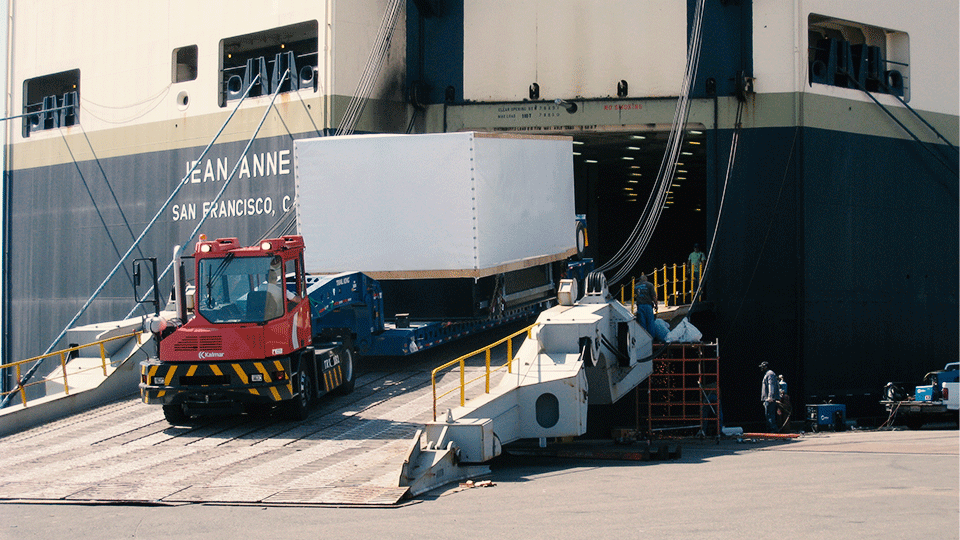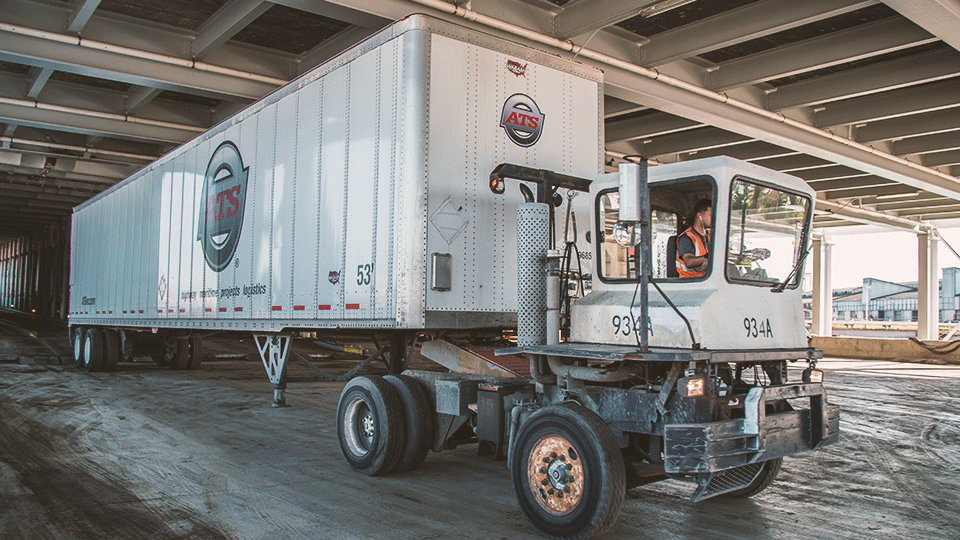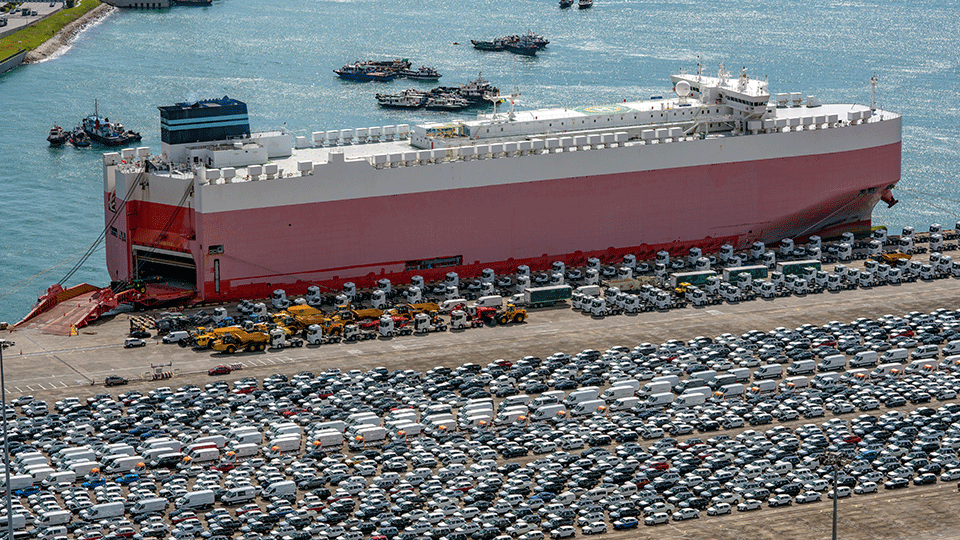- Roll-on/roll-off transportation definition
- Typical roll-on/roll-off cargo types
- Advantages of using roll-on/roll-off services
- Disadvantages of using roll-on/roll-off services
- Roll-on/roll-off transport costs
As you know, international shipping is a complex process, necessitating well-formed plans, competent partnerships and experienced providers. Without the proper understanding and expectations, companies with international cargo to move have trouble doing so in a time and cost-effective manner.
In a world comprising more than 190 countries and multiple avenues for transporting cargo between them, it’s okay if you feel apprehensive whenever the time comes to organize a shipment.
Questions about each of your international transport options should never go unanswered — especially as you strive to meet customer commitments and organizational timelines.
All too often, though, you’ve struggled to understand these processes — processes that feel like they’re simply not for you to know.
Moving cargo across an ocean or waterway using roll-on/roll-off (Ro/Ro) procedures is a service that many businesses, like yours, utilize. And, when managed correctly, Ro/Ro transport helps these companies smoothly execute their supply chains.
But will it meet your needs?
Here at ATS International, we take pride in helping shippers around the globe move non-containerized cargo using a number of services — Ro/Ro included.
Over the years, our time arranging these shipments has been filled with learning experiences and procedural optimization as we strive to meet each customer’s unique needs.
Let's dive into all things ro/ro, so you can better understand how it might fit into your freight strategy moving forward.
🔽 Listen to the Podcast on Ro/Ro Transportation 🔽
Discover More "Beyond The Road" >
What is Roll-On/Roll-Off Transport?
Roll-on/Roll-off transportation, also commonly referred to as Ro/Ro service, is an international transport method wherein cargo (usually non-containerized) is loaded onto a roll-on, roll-off marine vessel. Typically pulled or driven into the belly of these vessels via ramp, Ro/Ro cargo must either be placed upon, or have been already secured to, a set of wheels in order to load. Once on board, cargo is lashed into place on one of the Ro/Ro vessel’s many internal levels and readied for transit.

The vast majority of vessels used for international oceanic/waterway transportation fall into one of three categories: Ro/Ro vessels (as discussed here), container vessels (used for containerized cargo) or breakbulk vessels (used to transport static, large cargo that is not self-propelled and doesn’t fit in a container).
In addition to being used for self-propelled goods, Ro/Ro transportation is a common alternative to breakbulk shipping for large, non-self-propelled cargo.
What Kind of Cargo is Moved Via Ro/Ro Transportation?
Due to the nature of Ro/Ro vessels — which aren’t equipped with a crane for loading — roll-on/roll-off transportation services are commonly used to move three categories of cargo:
- Self-propelled vehicles/machinery such as cars and construction/agriculture equipment that can be driven onto the marine vessel.
- Goods that rest on/within, and are secured to, a “towable” unit — typically a semi-trailer. These shipments are pulled onto the Ro/Ro vessel using a vehicle on hand at the port and secured without much hassle.
- Non-containerized, large, static cargo that can be moved onto one of the port’s Mafi trailers (also known as “roll trailers”) for loading and transit. Examples of these products include but aren’t limited to, steel piping, metal coils, generators, transformers, boilers and tanks.

What Are The Advantages of Using Ro/Ro Service?
With these understandings in mind, and a better grasp on what Ro/Ro means in the international shipping world, let’s talk about the advantages of utilizing Ro/Ro capacities over the alternatives.
The main advantages of sending cargo Ro/Ro are:
- Ro/Ro transportation keeps cargo safe and secure.
- Ro/Ro services are offered on a fixed, predictable schedule.
- Ro/Ro ocean carriage costs can be lower than breakbulk prices.
1. Ro/Ro Transportation Keeps Cargo Safe and Secure
Oceanic transport can be a harrowing enterprise. With so many touchpoints to undergo, it’s not uncommon for products — especially those that can’t fit in a container — to take on damage during transit.
Whether it’s bumps and bruises during breakbulk loading/unloading processes or the mix of issues that stem from exposure to the elements, safely moving cargo across water can be challenging.
Since cargo is safely housed within the belly of these vessels, roll-on/roll-off service is known to significantly reduce the chances of cargo damage due to tarps failing — or another unforeseen issue — during the course of a shipment.
And, instead of having to hold your breath as cargo is hoisted by crane on both sides of its journey (as is the case with breakbulk transport), Ro/Ro removes these handling points through the use of ramps and Mafi trailers.
For these reasons, roll-on/roll-off transportation is seen as one of the safest methods for transporting nearly every kind of commodity.
2. Ro/Ro Services Are Offered on a Fixed, Predictable Schedule
Automobile manufacturers are the largest customers of Ro/Ro carriers. These companies, which contract into continual transport agreements with Ro/Ro carriers, are constantly moving vehicles abroad using these vessels.
And, even though roll-on/roll-off carriers fill their vessels with other types of products at each stop, for the most part their schedules are formulated based on the commitments they’ve made to car companies.
As a result, Ro/Ro vessels operate a liner service and reliably land at the same ports — making their schedules easier to predict and space easier to secure than other vessel types. In turn, recognizing these stop-off points and the frequency with which they occur can benefit shippers with cargo to move as they plan accordingly.

3. Ro/Ro Ocean Carriage Costs Can Be Lower Than Breakbulk Prices
Since roll-on/roll-off carriers are typically on such a set schedule with pickups and drops to make regardless, it’s usually possible to achieve cost savings by attaching your shipment to their route.
You see, Ro/Ro carriers don’t want to leave the port without a full load.
Since self-propelled cargo like cars and machinery typically don’t fill their entirety, shippers with products to move can fill this void without displacing a vessel’s pre-planned route.
In the end, matching your needs to a Ro/Ro carrier’s can cost less than securing breakbulk capacity — vessels that are routed more sporadically, based on where cargo is located.
What Are The Disadvantages of Using Ro/Ro Services?
For many companies, Ro/Ro shipping makes a lot of sense. And, now that you know the advantages that stem from doing so, you understand why. At the same time, however, roll-on/roll-off transportation isn’t a perfect service for every business and there are some downsides you should note.
The main disadvantages of Ro/Ro transportation are:
- Ro/Ro transportation can mean higher on/pre-carriage costs.
- Ro/Ro vessels “call” ports less frequently than container vessels.
1. Ro/Ro Transportation Can Mean Higher On/Pre-Carriage Costs
Comparatively speaking, Ro/Ro vessels aren’t nearly as common as the container ships that frequent ports around the world. Practically every port in every country has container ships ready, willing and able to transport containerized cargo.
The same cannot be said of Ro/Ro vessels.
Instead, these ships “call” far fewer ports than container vessels, making it unlikely that your Ro/Ro port of export and port of discharge will be close to your load’s origin/destination locations. As a result, companies that utilize Ro/Ro vessels often find themselves paying a bit extra to transport cargo the distance to/from each port.
2. Ro/Ro Vessels “Call” Ports Less Frequently Than Container Vessels
It’s estimated that on average roll-on/roll-off cargo vessels offer one to two sailings per month out of their designated ports — calling each port once every three weeks.
Container vessels on the other hand — which are far more common and widely utilized — offer sailings from their ports every five, or so, days. For this reason, if you’re interested in sending cargo by Ro/Ro vessel, you’ll want to plan accordingly.
Without giving your provider(s) enough lead time, it may be difficult to plan your cargo’s journey in accordance with your timelines. A missed appointment/loading time at your Ro/Ro carrier’s port will set you back substantially as that vessel won’t be back around any time soon, forcing your to re-route your shipment entirely.
What Does Ro/Ro Transportation Cost?
The cost of roll-on/roll-off transportation services are based on an assessment of the cargo's weight/measure (w/m) coupled with the going rate of oceanic transportation.
The weight/measure of any product is determined to be either its cubic meter measurements (length x width x height) or its total weight — whichever is higher.
With a product’s weight measure in mind and the complexity/specification of its move, Ro/Ro carriers give their customers a rate calculated to get the job done.
Although your costs will change based on your situation — making it imperative that you consult a trusted freight forwarder or transportation provider — expect to pay between $150-$250 per weight/measure. Ultimately, the rate you pay to move your cargo on a Ro/Ro vessel will depend on the overall footprint you’re occupying within it.
Related Content: What Does International Shipping Cost?
Get Your International Shipping Done Right
With an understanding of roll-on/roll-off international transport services, you’re one step closer to mastering your next shipment.
That said, here at ATS International we know how difficult it can be to understand this marketplace — especially if you don’t interact with it every day. To give you the tools you’ll need to execute your next load and come through for the customers that count on you, no matter how far it is to their door, we’ve compiled a library of answers to some of the most common international transportation questions.
Check out the section of the ATS Learning Hub dedicated to international shipping to round out your knowledge on this crucial part of your supply chain.
Finally, if you’re wondering how ATS International can help you get your cargo moved from A to B by creating your best-fit transport concept, please don’t hesitate to reach out. We’re always happy to help you in any way you need.




